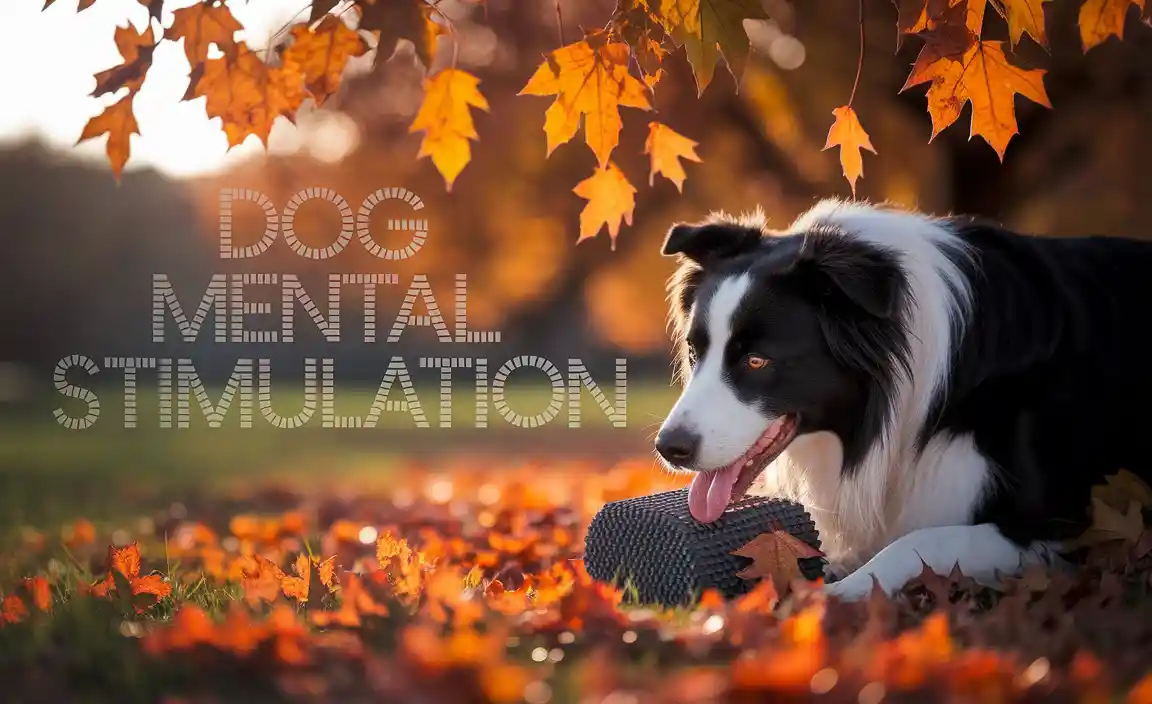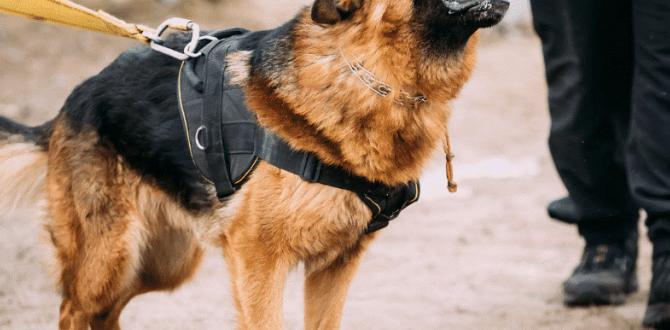Effortless dog mental stimulation can feel like a bit of a mythical unicorn for many pet parents. We envision our furry companions happily engaged, their brains ticking away, without us having to embark on elaborate, time-consuming activities. The good news? It’s entirely achievable! In fact, the most effective mental enrichment often seamlessly integrates into your daily routine, requiring minimal extra effort and yielding maximum rewards for your dog’s well-being. Beyond just physical exercise, a mentally stimulated dog is a happier, calmer, and better-behaved dog. Their minds need workouts just as much as their bodies, and thankfully, these exercises don’t have to be a chore.

Why Prioritize Dog Mental Stimulation?
In today’s world, many dogs live relatively sedentary lives when not on walks. This lack of mental engagement can lead to boredom, frustration, and a host of unwanted behaviors like excessive barking, destructive chewing, or anxiety. When a dog’s mind is occupied with interesting challenges, they are less likely to seek out “trouble.” Think of it like a human who is constantly bored – they might start fiddling with things, getting into mischief, or feeling generally dissatisfied. The same applies to our canine companions.
Mental stimulation helps to:
Prevent Boredom and Destructive Behaviors: A tired mind is a contented mind.
Reduce Anxiety and Stress: Engaging a dog in a puzzle or training session can be a powerful stress reliever.
Improve Focus and Concentration: Regular mental workouts can enhance your dog’s ability to focus, which is beneficial for training and overall obedience.
Strengthen the Bond with Your Dog: Working on challenges together creates a shared experience and deepens your connection.
Boost Confidence: Successfully solving a puzzle or mastering a new trick can significantly boost a dog’s self-esteem.
Slow Cognitive Decline: Just like in humans, keeping a dog’s brain active can help maintain cognitive function as they age, potentially delaying or reducing the severity of conditions like canine cognitive dysfunction.
Integrating Dog Mental Stimulation Training into Your Routine
The beauty of effortless mental stimulation lies in its adaptability. You don’t need specialized equipment or hours of free time. Often, it’s about looking at everyday activities through a new lens and incorporating small, enriching elements.
1. Embrace the Power of Food Puzzles and Treat-Dispensing Toys:
This is perhaps the most straightforward way to provide effortless mental stimulation. Instead of feeding your dog their meals in a bowl, use a treat-dispensing toy or a food puzzle. This transforms a mundane meal into an engaging challenge. Your dog has to figure out how to get the kibble out, which requires problem-solving skills and patience. Start with easier puzzles and gradually increase the difficulty as your dog gains confidence. Many interactive food toys are designed to be relatively low-effort for the owner; you simply fill them up and let your dog do the work.
2. Scatter Feeding:
A simpler version of food puzzles, scatter feeding involves spreading your dog’s daily kibble around a safe outdoor area (like your backyard) or even indoors. This mimics natural foraging behavior, engaging their sense of smell and encouraging exploration. It’s incredibly easy to do – just a quick handful here and there before you head out or while you’re watching TV.
3. The “Find It” Game:
This is a versatile game that requires minimal setup. Start by showing your dog a few high-value treats. Then, let them see you hide one under a cup or behind a piece of furniture. Say “Find it!” and encourage them to use their nose to locate the treat. As they get better, you can hide treats in more challenging spots or use multiple hiding places. You can even integrate this into their walks, hiding treats along the path for them to discover.
4. Short, Positive Training Sessions:
Even five to ten minutes of focused dog mental stimulation training each day can make a significant difference. Instead of just going through known commands, teach your dog one new trick or refine an existing one. This could be anything from a simple “shake” to a more complex “play dead.” The key here is consistency and positivity. Use positive reinforcement, such as praise, small treats, and enthusiastic encouragement. These short bursts of learning keep their minds sharp and strengthen your communication.
5. Nose Work Activities:
Dogs have an incredible sense of smell, and engaging this sense is incredibly rewarding for them. You can incorporate nose work into your routine by playing hide-and-seek with your dog, having them search for specific toys, or even introducing them to the concept of scent articles (hiding a small item for them to find). Many online resources and local classes can guide you on how to start formal nose work, but even simple at-home games provide substantial mental engagement.
6. Novel Environments and Experiences:
While this might sound like more effort, it doesn’t have to be. Instead of always going to the same park, visit a different walking trail, a pet-friendly store for a brief visit, or even just walk down a different street in your neighborhood. New sights, sounds, and smells provide a wealth of mental stimulation. The key is to keep these experiences positive and not overwhelming for your dog.
7. Environmental Enrichment Indoors:
Even when you’re inside, you can create opportunities for mental engagement. Rotate your dog’s toys regularly so they always have something “new” to discover. Leave out a new scent for them to explore (like a favorite blanket from another family member). Simply changing the layout of their familiar environment slightly can also spark curiosity.
Making It Truly Effortless
The “effortless” aspect comes from integrating these activities naturally into your existing lifestyle. Think about:
Feeding Time: Transform it into a puzzle.
Downtime: Incorporate short “find it” games while you relax.
Walks: Sprinkle in scent games or explore new routes.
Training: Dedicate just a few minutes each day to learning something new.
By understanding the importance of mental exercise and looking for simple ways to provide it, you can unlock a happier, more fulfilled canine companion without adding stress to your own life. The rewards – a well-behaved, confident, and contented dog – are well worth this small, effortless investment.
Meet Elyse Colburn, the devoted canine companion and storyteller behind the enchanting world of “Tales, Tails, and Adventures Unleashed.” A passionate dog enthusiast with a heart full of paw prints, Elyse Colburn shares heartwarming tales and insightful adventures, celebrating the joy, loyalty, and endless antics that make every dog a true hero. Join Elyse Colburn on this tail-wagging journey, where every post is a love letter to our four-legged friends.






